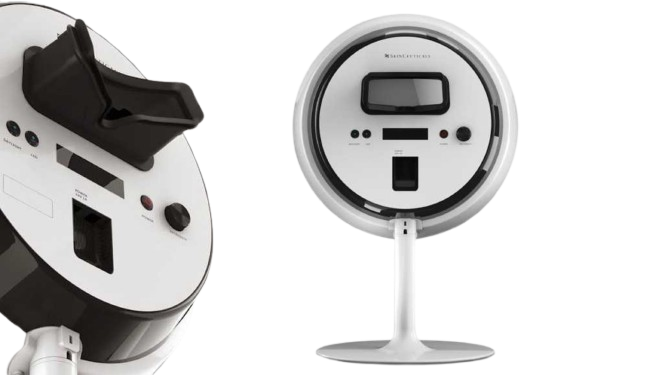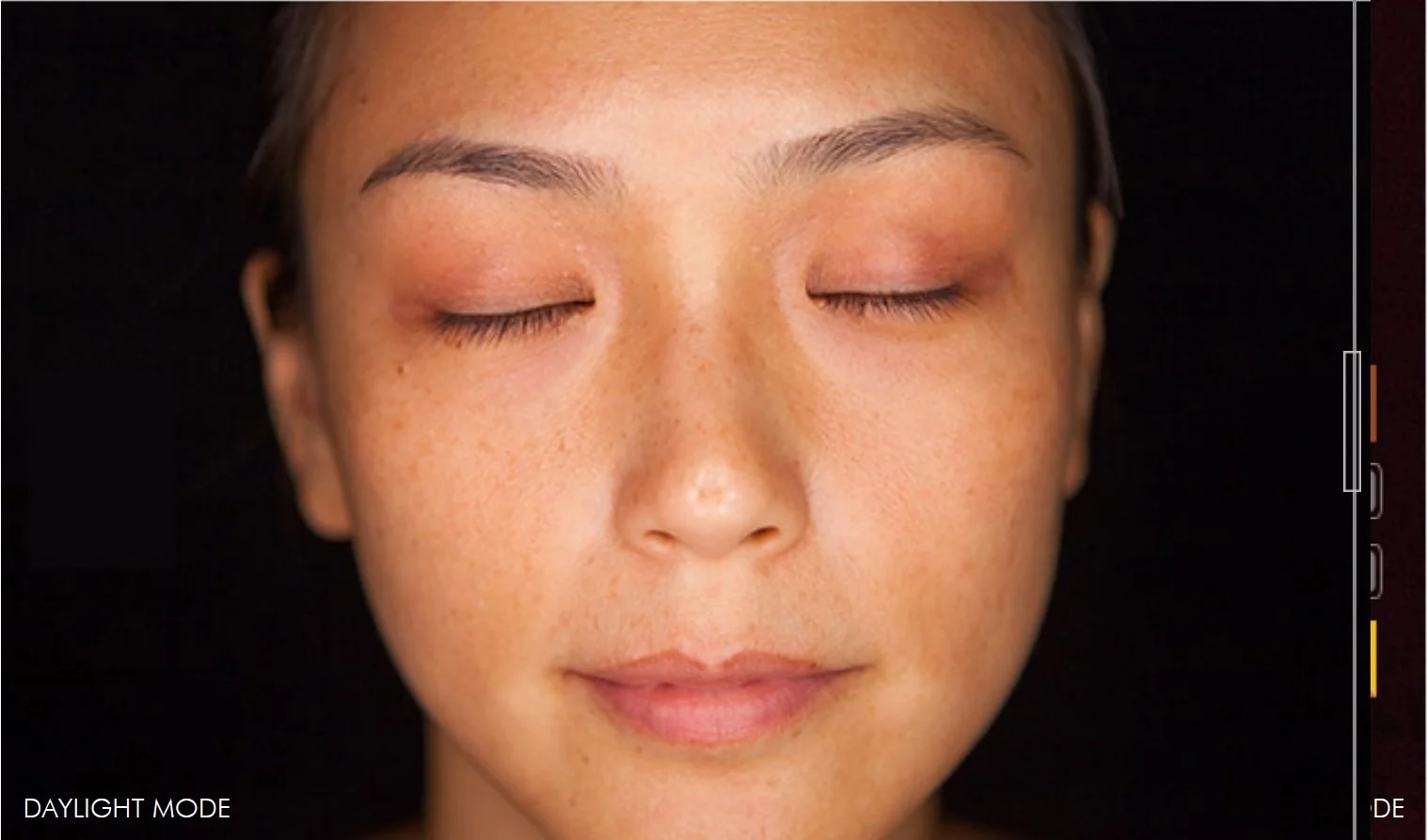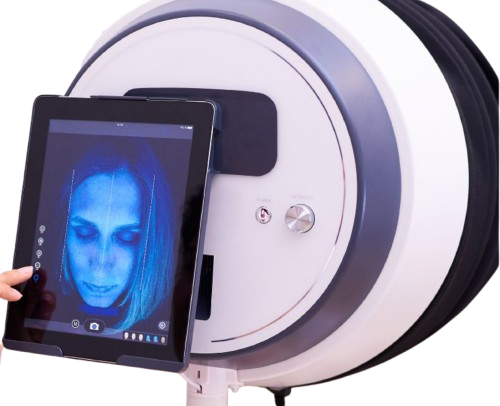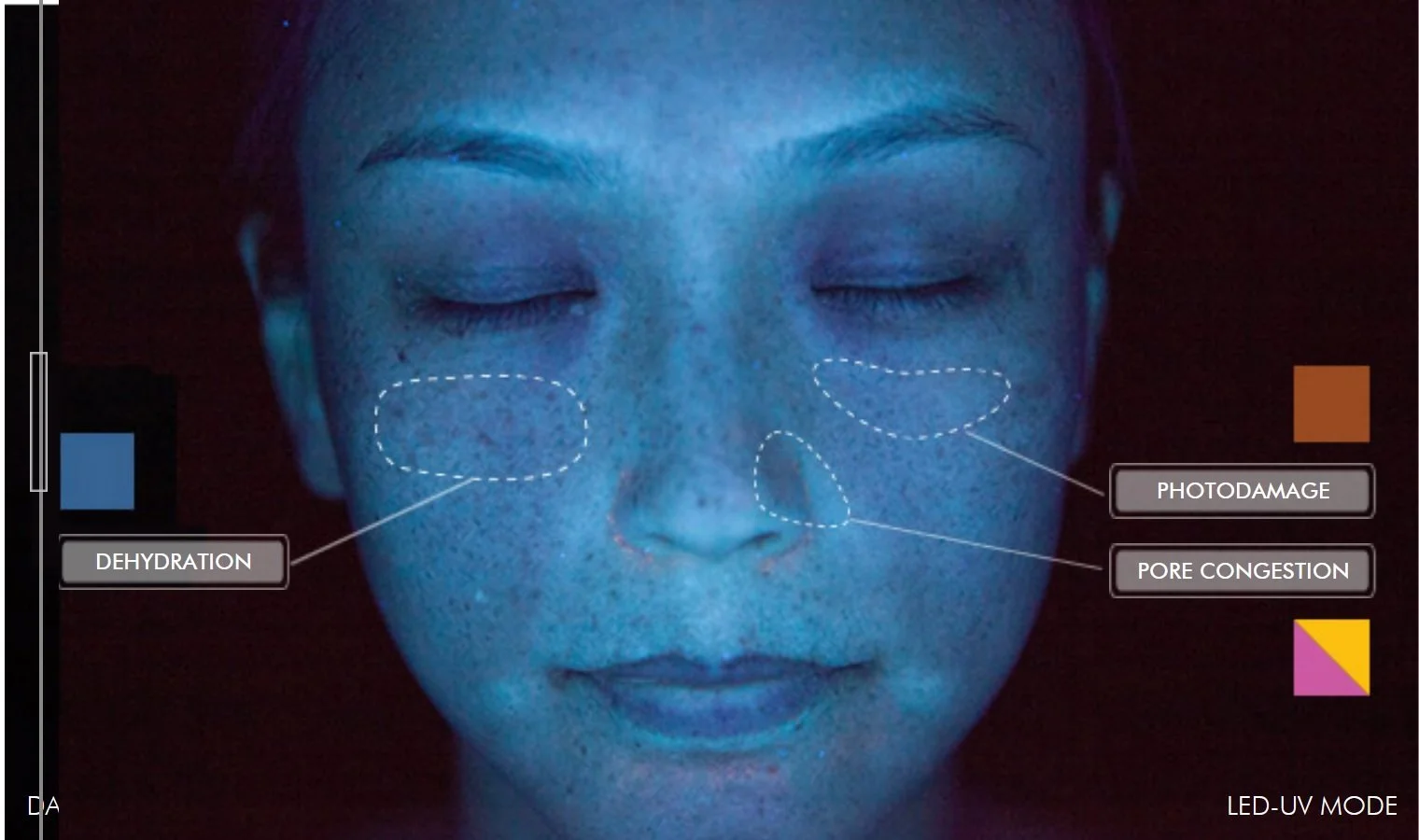How we digitally analyse your skin
How we digitally analyse your skin
L'Oréal Paris SkinCeuticals SKIN ANALYSER
Sun and other skin damage is not always visible to the naked eye. Just because your skin looks healthy and fabulous on the outside, it may not be so healthy at a deeper level. The digital skin analser will identify potential problems before you see them on the surface of your skin.
The Skin Analyser is a LED-UV light device that illuminates skin imperfections (damage) caused by environmental factors.
While some skin concerns and imperfections are visible in everyday light, some will only be visible under UV light which highlights damage beneath the skin’s surface by detecting skin’s fluorescence.
The Skin Analyser LED has two light modes which are produced by solid-state UV emitters dispersed by six polished chrome mirrors. It reveals visible and underlying skin imperfections including accumulated sun damage (lentigines), oily skin and congested pores, dehydrated and thinner skin areas, uneven texture, and poor desquamation.
Simulated Daylight mode for reviewing visible skin conditions and concerns, and
LED-UV light mode for reviewing skin fluorescence (emitted at 320- 365nm).
The Skin Analyser allows for the use of a smartphone camera to digitally document the consultation thereby providing an evidence-based means of diagnostic evaluation. We will recommend a course of treatments, products and regimens and create digital documentation after each session so you can see the improvement over time.
THE SCIENCE OF FLUORESCENCE TECHNOLOGY
Fluorescence is caused when one radiation wavelength is absorbed by a compound which is reflected back at a different wavelength. Certain compounds excite electrons in molecules that change the wavelength energy such that it converts from shortwave UV light to longer wave visible light. When a very specific range of UV light (320-365nm) illuminates skin it reacts in different ways based on what it comes in contact with. Melanin absorbs the light showing as an absence of colour, but other compounds ‘excite’ follicular fluorescence in the skin, changing the wavelength to colours visible to the human eye. Based on the visible shades that are reflected back from the skin, characteristic diagnoses can be made. Propionibacterium acnes, for example, are a bacterium implicated in acne causation which always glow an orange/pink colour. Drier skin flakes from poor desquamation will fluoresce a bright white colour. Healthy skin will fluoresce a homogenous light blue, while lipid deficient or thinner skin areas will be indicated by darker shades of blue.
LED-UV
Compounds in the skin convert shortwave light into longwave visible light
DIAGNOSTIC MODES
DAYLIGHT
The simulated Daylight mode provides the perfect starter setting for identifying visible skin concerns and conditions before transitioning to the LED-UV mode. In this mode we can pinpoint visible surface level indications of;
Fine lines and wrinkles
Uneven skin tone
Visible lentigenes, brown spots, and natural pigmentation such as freckling
Redness/blotchiness/flushing (indications of rosacea or sensitive skin)
Oily/acneic skin
Dry/flaking skin
Wrinkling, creping, and other indications of skin laxity and loss of firmness
LED-UV light mode detects fluorescence in the skin for clearer visibility of skin concerns and conditions not visible in everyday light, pinpointing unwanted pigmentation, poor desquamation, dehydration, congested pores, and skin oiliness.
COLOUR GUIDE
While healthy skin reflects back UV light creating a blue glow, melanin in the skin absorbs the light showing as dark spots on the surface of the face. Similarly, congested pores give off pink or orange fluorescence, oily skin is visible in a yellow colour, and dry flaky skin shines as bright white fluorescence. Large patches of darker blue indicate areas of thinner, dehydrated skin













